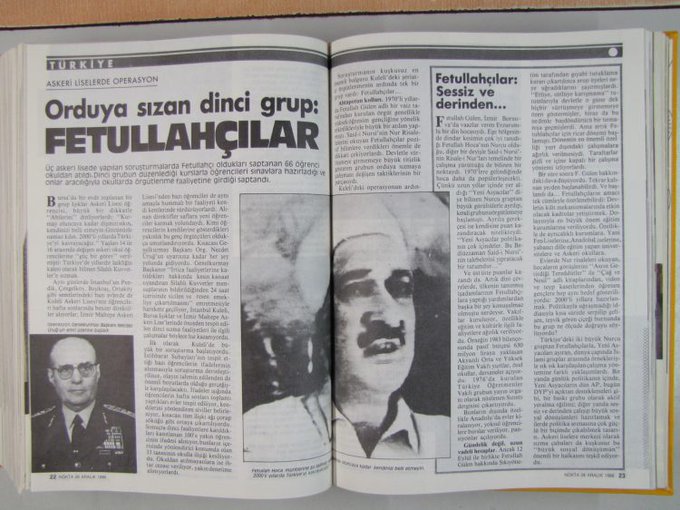The Gulen Movement’s Collision Course With The Turkish State

Since Turkey’s failed July 15 coup, the Turkish authorities have accused U.S.-based cleric Fethullah Gulen of being behind the attempted takeover of power. It is an explanation that is widely accepted across Turkey. A brief look at the history of Gulen's movement helps explain why.
What Does The Movement Want?
Gulen was originally a supporter of Said Nursi, an Ottoman-Kurdish scholar from the Hanefi school of Sunni Islam. But in the 1970s, Gulen formed a sect of his own that people later called "Gulen Camaati" (Gulen community or movement).
Like any other Islamic sect under the strictly secular and pro-military Turkish governments, Gulen’s community was banned and operated largely underground until 1983. But, unlike other religious communities, which were mainly teaching the Koran and performing private religious prayers, Gulen’s group became increasingly politicized. Businessmen began to donate money and the movement became a political player among conservative and religious groups of Turkey.
"[Gulen] wrote at that time that he wanted to train 'courageous, selfless men' for society," says Rusen Cakir, a leading expert on Turkish Islamic groups. "It was about them training and planting young people in different important layers of the government: the police, the justice system, the Interior Ministry, and even the army."
But, unlike more transparent political parties, Gulen's sect kept everything secret. It was never clear how many members the group had, who they were, and what exactly they were seeking to do politically. It was widely rumored that his movement, and all its related "foundations" and businesses, were getting wealthier and more and more people were joining his community, but there was little categorical evidence to support this.
How Big Is The Movement?
It is almost impossible to quantify the size of the Gulen movement's membership or its wealth. By many estimates, over the course of some 40 years, the movement has gathered tens of thousands of supporters.
Gulen has repeatedly denied having a "network." He has said that people may sympathize with him in any government institution even without an organized network, as is the case with other political parties. But analyst Cakir says that directing school graduates to choose positions selected by "community guides"-- members of the Gulen movement who counsel younger members -- was not something any other political party was doing.
Why Did The Movement Clash With The Turkish State?
In the 1970s, the government, army, and security services tried to clean up their ranks and remove those they perceived to be Gulenist "implants." And in the 1980s, secular parties and magazines (like Nokta from 1986, which is pictured below) were warning against secret "Fethullahists" in the army.
28 Aralık 1986 tarihli Nokta Dergisi haberi: Orduya sızan dinci grup: ... - bit.ly/29Uxwlw @medyascopetv
Working up the ladder in the army and civil service, Gulen supporters helped other members of the movement join their ranks. In 2010, prior to a national exam for entrance into government agencies, exam questions were reportedly communicated among Gulen movement members to ensure their passing the exam.
While Gulen was gathering and guiding supporters, his schools both in Turkey and abroad were bringing him fame and popularity. Critics say that running those successful schools was a "cover" for his "infiltration" of government, although raising the level of Turkey's education and culture was always one of Gulen’s stated goals.
In 1999, secret recordings of Gulen's speeches were played on state television. In them, he called on his supporters to "silently and patiently" infiltrate government agencies and wait for "the moment" of change. "If you act too soon, you'll have Turkish state institutions on your back," he said.
Under increasing pressure from secular media and government, Gulen emigrated to the United States in 1999. His movement, though, kept growing.
Why Did The Relationship With Erdogan Turn Sour?
In the 2000s, Gulen already had scores of loyal supporters at high levels of the police, justice system, media, education, and even the army. He was also a close ally of Recep Tayyip Erdogan, who becameThe Gulen Movement’s Collision Course With The Turkish State:


